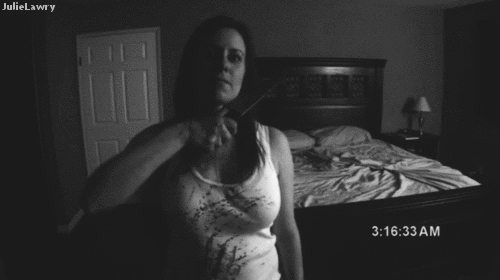Confessions of a Film Junkie: Do Horror films help American’s
cope with their fears? (PART II)
By Brian Cotnoir
I wrote an article a
little over two years about whether or not it can be said that Horror films
help American’s cope with their real life fears. I talked about how since the earliest days of
films that some American’s rely on Horror films to help cope with their fears. I briefly touched upon Horror movies
reflecting the fears of people of the late 90’s and early 2000’s, but I really
didn’t get into that much detail, and so seeing as it seems like the whole
country is in some form of turmoil I decided that I would take this opportunity
to write a follow up to that article.
So
right before 9/11 there weren’t many quality Horror movies out there. Sure there were films like “Scream”, “The Others”, and “The Sixth
Sense” which, that were wildly successful, and “Deep Blue Sea”, which walked the line between Horror and
Adventure. We also had Tim Burton’s “Sleepy Hollow” which was marketed as
Horror, but in all actuality was more campy horror, than actual horror. And then we had really bad films like “I Know what you did Last Summer”, “Jeepers Creepers” and the remake of “The Haunting”. But amongst all of those films the one Horror
film of the 90’s that stood above all of them was, “The Blair Witch Project”. I
was only 10 years old at the time of the release so I didn’t see it until much
later when it was out on video, but I remember people talking about it. Some said it was the “Scariest Movie since The Exorcist”, and that it was “going to
revolutionize the film industry”. While,
I never found “The Blair Witch Project”
to be all that good or even scary, there’s no doubt that this film had a major
effect on how Horror films would be made and marketed for years to come (but
I’ll get into that a little bit later).
Now,
I’m going to go back to “The Blair Witch
Project”. Now this wasn’t the first
“found footage” Horror film ever made, but this was the film that showed
studios a way to make a cheap—but still frightening—horror movie. You see “The Blair Witch Project” had one major
advantage over most films; it had the allure of a “I Dare you To See it” film
and had a new form of media to market it; the internet. The makers of “The Blair Witch Project” used the internet to promote their film and
help spread the message and myth of it to help it reach a wider audience. It was these filmmaking techniques and
marketing strategy that would pave way for another found footage series to find
success. Oren Peli’s “Paranormal
Activity” truly ushered in the age of the Found Footage Horror film in
Hollywood. Like the “The Blair Witch Project”, the marketing
for “Paranormal Activity” was solely
a viral marketing campaign. The first
time I heard about this film was from my best friend who heard it from her
older brother who lived in California.
He saw the film in theaters and then told us we had to see it, when it
came around. It wasn’t showing in any
theaters in Boston at the time (near where we went to school) and when we tried
finding out more about it on-line found the website where you could request
that it be shown in a theater near you.
To our excitement, “Paranormal
Activity” came to Boston theaters and we were absolutely blown away by
it. Once again, like “The Blair Witch Project”, “Paranormal Activity” sparked many
debates amongst its viewers about whether the film was real or not. The success
of “Paranormal Activity” sparked the demand for sequel films, prequel films,
spin-off’s and countless copycat films by other studios hoping to cash in on
the found footage popularity genre. Even today some studios are still making
Found Footage Horror films, even though by now most of us are fully aware that
they are fake. So why do so many people
keep going to see them? Well going
back to the 9/11 discussion, we saw thousands of people killed on live TV right
before our very eyes. Look at all the
violent attacks that we’ve see reported on the news the past several years; The
Sandy Hook Elementary School massacre, the Boston Marathon Bombing, The Charleston
Church Shooting, the Pulse Night Club shooting in Orlando, and many other
horrific acts of violence. With all
those tragic and horrifying things happening in the real world today, how can
anybody be afraid of a Horror movie about a fictional serial slasher, or a
vampire, or even aliens? It’s not scary
to some because it’s not real. We see
terrifying things in real life on the news every day and I think that it’s
because found Footage Horror films have the illusion of appearing like the
events on camera are actually happening that makes them more frightening to
some people. The special effects don’t
look like some big-budget CGI work, they look like they’re actually
happening. I think some people honestly,
want to believe these films are real. I
think everyone knows someone who believed for years that some found footages
films were real. I think there is a good
possibility that some people want to believe these films are real so they can
be more afraid of something than what’s actually happening in the world today.
Whether
you agree with me, or you think I have no clue what I’m talking about, there is
no denying that Horror films have changed greatly in the 15 years since 9/11. Without even realizing it, the industry has completely
changed how we make, market, and view Horror films. I wonder what will be in store for Horror
films in the years to come.


